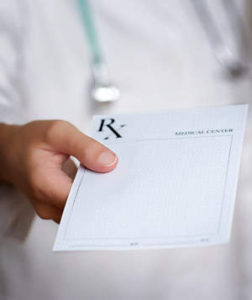
Let’s start with a little history.
When James Shooter was admitted to St. Bartholomew’s Hospital in London, England in 1828, he unwittingly became the world’s first recorded patient with what the medical community would eventually call pityriasis rubra pilaris.
Fast forward 169 years. The PRP community has only been around since late 1997 when a group of PRP patients and caregivers traded emails on AOL. It was Jean-Luc Deslauriers, a Canadian from New Brunswick, who got the ball rolling. Our own Tierney Ratti and Ginny Maxwell’s mother were there when the PRP Support Group was established. For 16 years PRP patients and caregivers traded an average of 150 emails each month. It was the only game in town for a while until technology caught up.
In June 2008, Jonah Grant-Scarfe, another Canadian, founded the PRP Facebook Support Group. In September 2013 it transitioned from a Public Forum into a Closed Group with about 100 members. By year’s end Tierney was the Administrator and the rest is history, Today the PRP Facebook community is nearing 1,100 members and growing. Each month a hundred discussions are started with thousands of comments and replies. The PRP Facebook community has earned the moniker: “The Land of Chat”.
Why Now?
That’s an easy question to answer. It takes money to do the things we want to do. Are the projects and activities worth the effort – worth your donation? That’s a decision we want you to consider. Here’s how we intend to use your donation.
#1 – 2017 PRP WORLDWIDE CENSUS
 The first PRP Worldwide Census kicked off on November 1, 2013 with emails being sent to over 1,500 PRP members of the PRP Support Group. Unfortunately, within 24 hours, more than 500 email addresses were purged as “undelverable”. By the end of May, however the PRP Community Database had updated records for over 1,000 PRP patients.
The first PRP Worldwide Census kicked off on November 1, 2013 with emails being sent to over 1,500 PRP members of the PRP Support Group. Unfortunately, within 24 hours, more than 500 email addresses were purged as “undelverable”. By the end of May, however the PRP Community Database had updated records for over 1,000 PRP patients.
As of November 17, 2017, the PRP Community Database currently tracks 1,627 PRP patients of which 1,002 (62%) are members of the PRP Facebook Support Group. The challenge we face is finding the missing data.
❏½ Missing locations: 468 (29%)
❏½ Missing onset dates: 868 (54%)
❏½ Missing onset ages: 933 (58%)
❏½ Missing diagnosis dates: 889 (55%)
❏½ Missing current status: 927 (57%)
We can do a better job. The focus of the 2017 PRP Worldwide Census is to fill in the data gaps for all the datapoints including:
❏½ Onset date
❏½ Onset age
❏½ Misdiagnoses
❏½ Biopsy history
❏½ Diagnosis date
❏½ Treatment (oral or injection – from a list of drugs)
❏½ Dermatologist of record
❏½ Current Status (active/remission)
The PRP Alliance will use the donations we receive to support the 2017 PRP Worldwide Census.
#2 – DIAGNOSING PRP
 During the summer of 2013, a total of 487 PRP patients/caregivers were polled by email and given an opportunity to participate in a first-ever PRP Biopsy Poll. The primary objective of the PRP Biopsy Poll was to better understand the role played by biopsies in the diagnosis of pityriasis rubra pilaris from the PRP patient perspective. There were only two questions:
During the summer of 2013, a total of 487 PRP patients/caregivers were polled by email and given an opportunity to participate in a first-ever PRP Biopsy Poll. The primary objective of the PRP Biopsy Poll was to better understand the role played by biopsies in the diagnosis of pityriasis rubra pilaris from the PRP patient perspective. There were only two questions:
❏½ How many biopsies have you had that supported a PRP diagnosis?
❏½ How many biopsies have you had that failed to confirm PRP?
Within a three-week period a total of 256 PRP patients/caregivers responded with the following results:
❏½ Diagnoses made strictly on the basis of clinical observations – no biopsies were ordered: 7.8%
❏½ The results of the biopsy provided sufficient information to support a diagnosis: 45.3%
❏½ Non- conclusive biopsies were ignored when the clinical observations were “consistent” with a PRP diagnosis: 23.4%
❏½ PRP diagnosis made without the benefit of a confirming biopsy: 23.4%
❏½ The PRP Biopsy Poll also suggests that when a dermatologist instructs a pathologist to consider PRP, the results nearly always confirm PRP.
It is time to revisit the issue of biopsies and the timely diagnosis of PRP. Your donation will support the 2017 PRP Biopsy Survey.
#3 – TREATING PRP
 When a patient is diagnosed with PRP, the dermatologist typical prescribes medications but rarely refers the patient to the PRP Alliance, PRP Facebook Support Group, the PRP Community on RareConnect or to the PRP Survival Guide. Instead, the PRP patient is referred to Dr. Google, Dr. Yahoo or Dr. Bing to find answers and support on their own. On November 1, the PRP Alliance will begin a year-long campaign to change that practice. The PRP Dermatology Referral Initiative will advocate that patients diagnosed with PRP – or any rare skin disorder – be referred to the following websites:
When a patient is diagnosed with PRP, the dermatologist typical prescribes medications but rarely refers the patient to the PRP Alliance, PRP Facebook Support Group, the PRP Community on RareConnect or to the PRP Survival Guide. Instead, the PRP patient is referred to Dr. Google, Dr. Yahoo or Dr. Bing to find answers and support on their own. On November 1, the PRP Alliance will begin a year-long campaign to change that practice. The PRP Dermatology Referral Initiative will advocate that patients diagnosed with PRP – or any rare skin disorder – be referred to the following websites:
❏½ Genetic and Rare Diseases Information Center (GARD)
❏½ National Organization of Rare Disorders (NORD)
The PRP Alliance has the support of both organizations in this effort.
PRP Treatment Efficacy Survey
The PRP community has an opportunity to collect information that could whet the appetite of PRP researchers. We hear the mantra every day: What works for one doesn’t work for all. But let’s quantify what works and what doesn’t, e.g., acitretin, methotrexate, Stelara, Cosentyx, Humira, Remicade, Otezla, Taltz, etc. The PRP Worldwide Census will identify drugs that have been prescribed, the PRP Treatment Efficacy Survey will collect information on what worked and what didn’t.
Your donation will support both the Dermatology Referral Initiative and the PRP Treatment Efficacy Survey.
#4 – RESEARCHING PRP
 Prior to 2012 the PRP community had lamented the lack of PRP research. In October 2012, researchers at Thomas Jefferson University began genetic research with 50 participants. Their focus was on the genetic mutation of CARD14. During the summer of 2015, Dr. Jouni Uitto, Chair of the Department of Dermatology and Cutaneous Biology expanded that research. The PRP community provided 105 participants and TJU published their finding in 2016. Today both genetic and clinical research continues in Philadelphia.
Prior to 2012 the PRP community had lamented the lack of PRP research. In October 2012, researchers at Thomas Jefferson University began genetic research with 50 participants. Their focus was on the genetic mutation of CARD14. During the summer of 2015, Dr. Jouni Uitto, Chair of the Department of Dermatology and Cutaneous Biology expanded that research. The PRP community provided 105 participants and TJU published their finding in 2016. Today both genetic and clinical research continues in Philadelphia.
The PRP community has been officially invited to participate in three major PRP research projects underway at Yale University School of Medicine. The funding for this research comes from the National Institutes of Health and the Foundation of Ichthyosis and Related Skin Types (FIRST). We are one of the “Related Skin Types”,
❏½ Genetic research where PRP is hereditary, e.g., familial PRP
❏½ PRP Patient Registry
❏½ PRP Burden of Skin Disease research
Your donation will support the efforts of the PRP Alliance to recruit participants in PRP research at TJU and Yale
#5 – BUILDING PRP AWARENESS
 The PRP community newsletter was published during the period April, 2014 to October, 2015. A total of 24 issues (598 pages) of PRP-related information was shared. The newsletter was suspended when the focus shifted to the PRP Survival Guide. It’s time to bring back the newsletter. It’s time to revive: On the Road… Our Journey from Onset through Remission .
The PRP community newsletter was published during the period April, 2014 to October, 2015. A total of 24 issues (598 pages) of PRP-related information was shared. The newsletter was suspended when the focus shifted to the PRP Survival Guide. It’s time to bring back the newsletter. It’s time to revive: On the Road… Our Journey from Onset through Remission .
The newsletter will mirror the organization of the PRP Survival Guide.
❏½ Chapter 1 – The Basics
❏½ Chapter 2 – Diagnosing PRP
❏½ Chapter 3 – Treating PRP
❏½ Chapter 4 – Daily Life
❏½ Chapter 5 – PRP Parents and Kids
❏½ Chapter 6 – Remission
❏½ Chapter 7 – PRP Research
❏½ Chapter 8 – PRP Advocacy
Your donation will underwrite the email distribution of On the Road… to the PRP community worldwide.

If you’ve been wondering how to help or if you’ve been wishing you could do something more, we welcome your tax deductible contribution.
If you needed some “specifics” to justify a donation, we hope that the information we provided here was enough.
